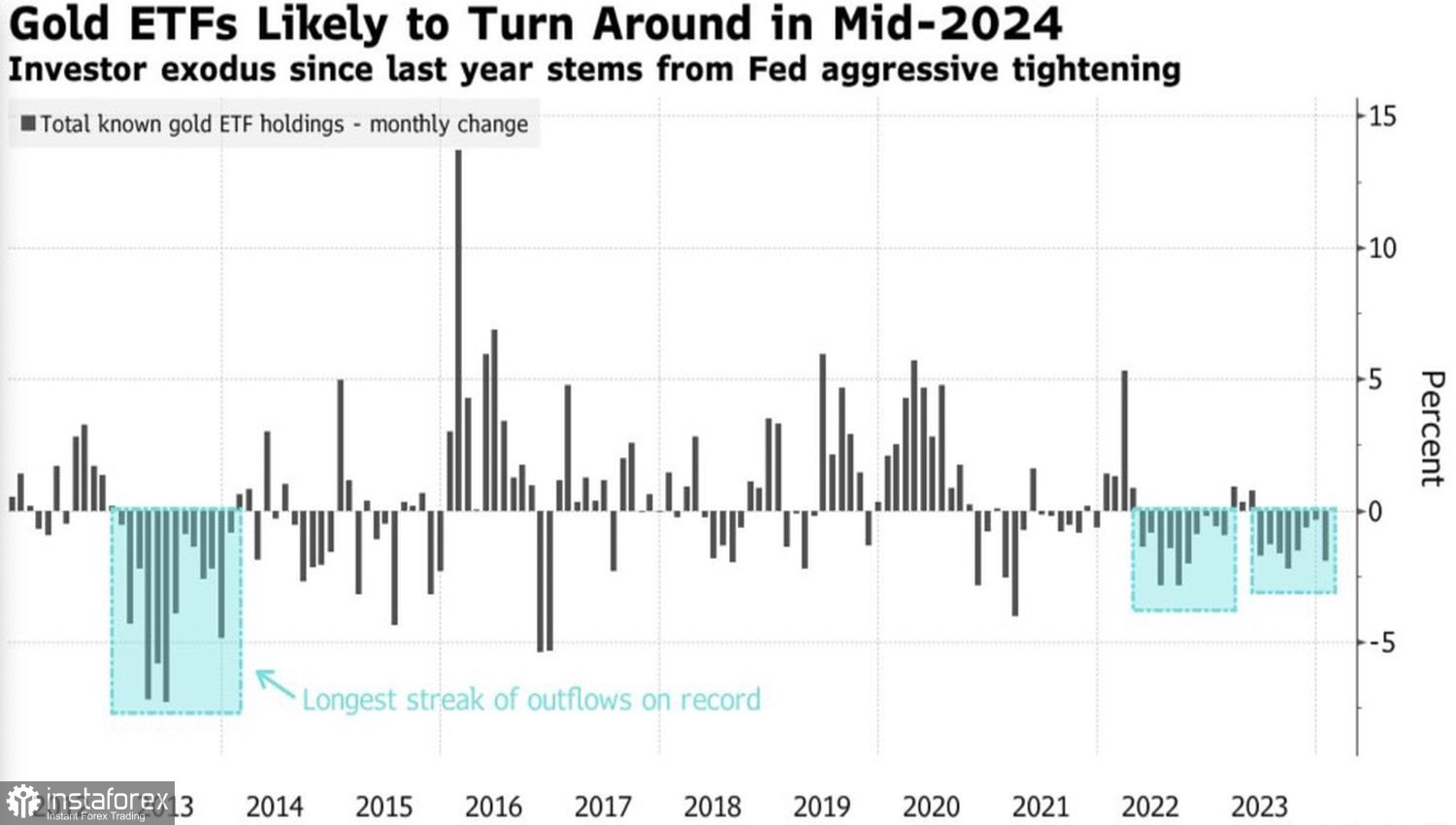Gold has the property of growing as the start of the Federal Reserve's monetary expansion approaches. However, if the Central Bank delays this moment, the precious metal risks losing its previous gains. This is exactly what happened after the publication of statistics on U.S. employment for January. The reduction in the probability of the first federal funds rate cut in March to less than 20% resulted in a rout for XAU/USD. However, surprisingly, the market bulls quickly recovered.
At first glance, the gold market sentiment appears bearish. Indeed, thanks to American exceptionalism and high demand for safe-haven assets, investor interest in the U.S. dollar is returning. This currency leads in the race among the major currencies, and its successes usually create problems for precious metals. The same can be said for the yields of U.S. Treasury bonds, whose rally, amid a remarkably robust economy, typically turns bulls on XAU/USD into retreat. But not this time.
Gold is not receiving support from the ETF market either. The inventories of specialized exchange-traded funds decreased in January, extending a losing streak to eight months. This represents the longest period since last year. If sales continue in February, the precious metal will face the strongest outflow since 2013.
Dynamics of Capital Flows into Gold ETFs

So why aren't XAU/USD quotes falling in such an unfavorable external environment? According to the World Gold Council, they have a bottom. And this bottom is formed by high demand from China. Due to a serious cyclical crisis and a sluggish recovery in the Chinese economy, investors prefer to buy precious metals. The situation is worsened by the rout in the stock market, leaving the Chinese with not many alternatives to gold. In 2023, it allowed them to increase savings by almost 17% in yuan.
And even though the prices of precious metals were not as high as on the eve of the Lunar New Year 2024, there is still enormous demand for it. This includes not only the investment component, which jumped by 15% last year but also the sale of jewelry. They grew by 8%.
Dynamics of Jewelry Sales in China

The bulls for XAU/USD are also getting a helping hand from successful auctions of U.S. debt placements. Increased demand was caused by the issuance of $54 billion in 3-year Treasury bonds. Investors are preparing for the implementation of $42 billion in 10-year obligations. As a result, the capital flow from the secondary to the primary market reduces the yield on bonds.

The further fate of precious metals will depend on the dynamics of American inflation. Further slowing of consumer prices in January could trigger a rally in XAU/USD. Conversely, an acceleration in the CPI is a reason to form short positions.
Technically, an inside bar was formed on the daily chart. This provides an opportunity to set pending orders to buy precious metals from the $2,028 per ounce level and to sell from $2,023.





















